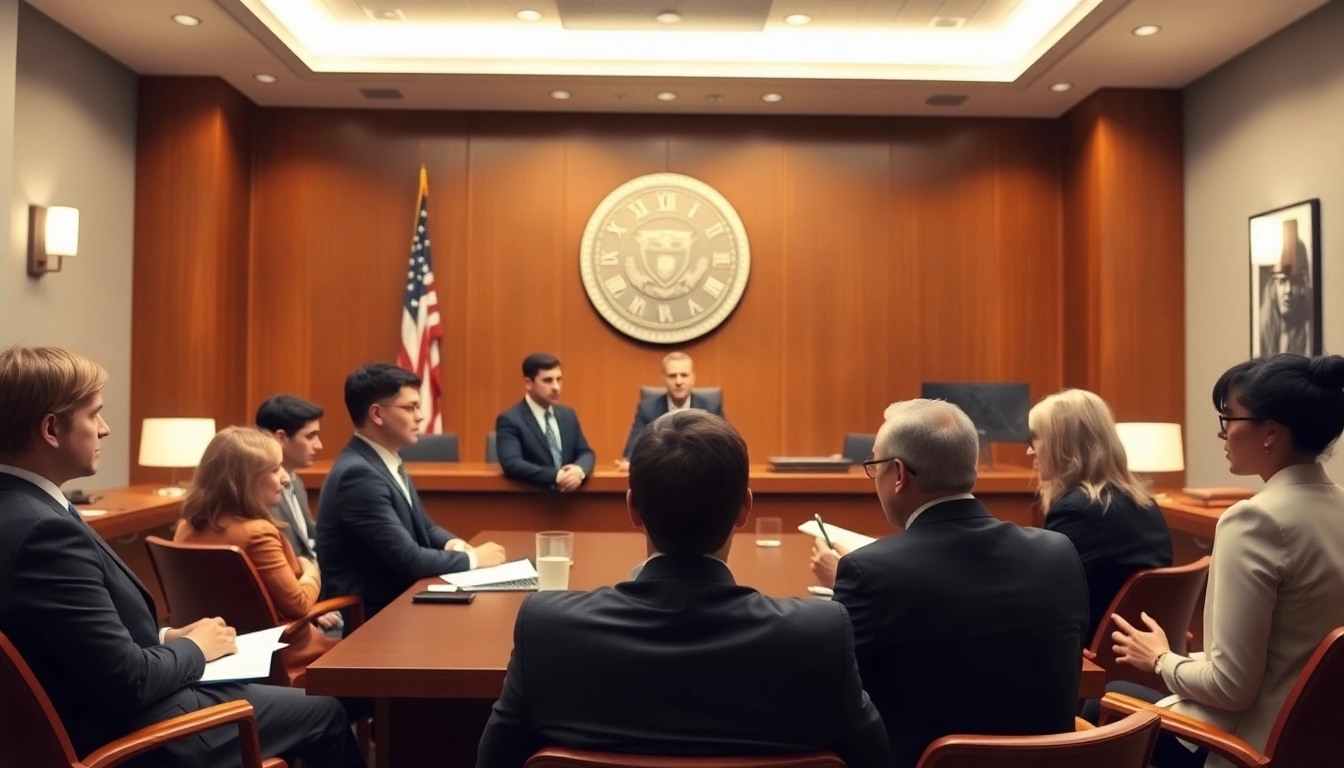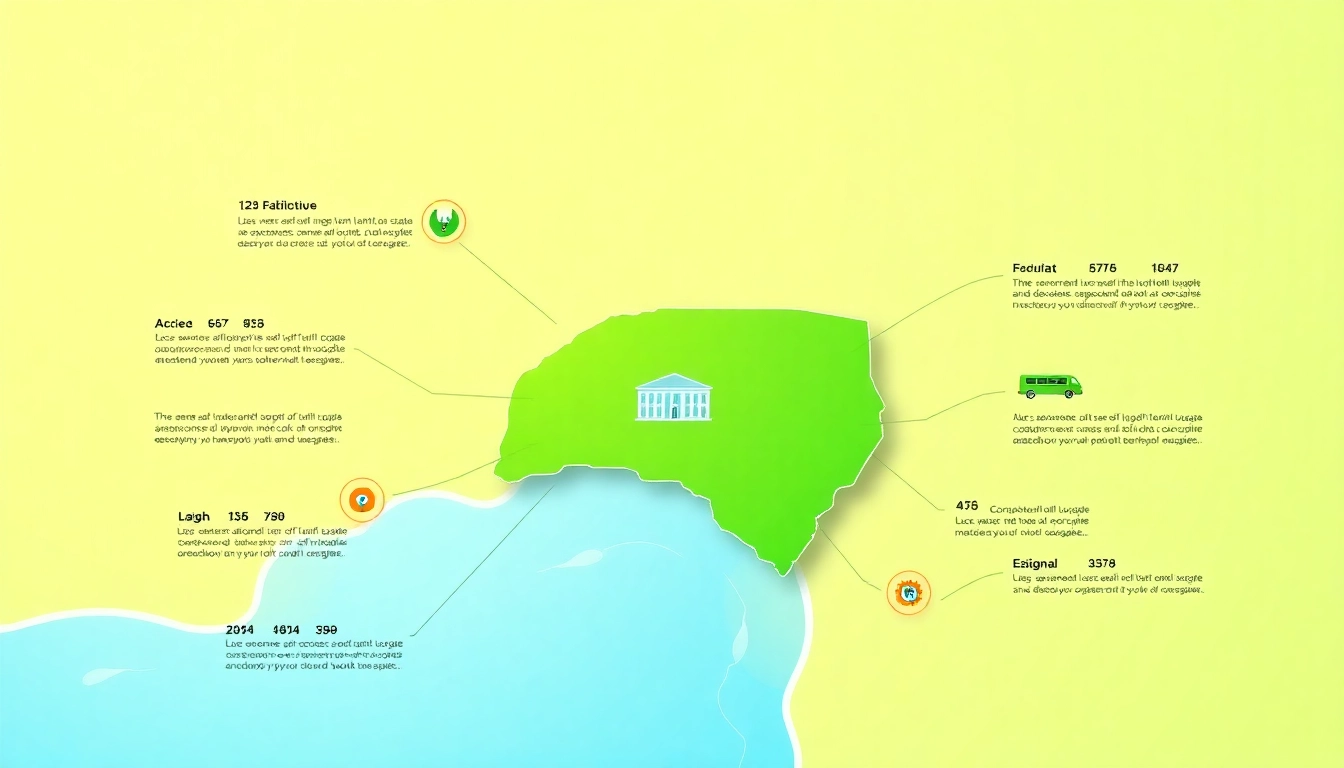Understanding Mass Tort Marketing
Mass tort marketing is an essential practice in the legal field, specifically tailored to managing and promoting claims arising from large-scale injuries or damages affecting numerous individuals. This area of marketing not only helps law firms to attract clients who have suffered from similar grievances but also ensures that the legal process is accessible to all affected parties. The rise of mass tort cases, such as those involving defective products or pharmaceuticals, underscores the significance of effective mass tort marketing strategies.
Definition and Importance
Mass torts are legal actions that allow multiple plaintiffs with similar claims to consolidate their cases against one or more defendants. Unlike class-action lawsuits, where plaintiffs’ interests are pooled into a single case, mass torts allow individuals to maintain separate legal identities and seek individualized compensation based on the specific harm they experienced. This distinction is crucial because it affords plaintiffs greater flexibility and often results in more equitable settlements.
The importance of mass tort marketing lies in its capacity to connect potential claimants with legal representation. By successfully conveying the value of pursuing a case, law firms can better serve clients seeking justice for widespread harm. Additionally, effective marketing strategies can raise public awareness about ongoing legal issues, encouraging those affected to pursue their rightful claims.
Key Differences from Class Action
While both mass torts and class actions serve to efficiently manage large numbers of claims, they differ significantly in structure and function:
- Legal Structure: Class actions consolidate similar claims into a single lawsuit, where the outcome affects all members of the class. Mass tort cases operate under individual claims that are heard collectively, allowing plaintiffs to present unique evidence.
- Individual Compensation: In mass torts, each plaintiff typically receives compensation related to their specific damages. In contrast, class actions often distribute a single pool of damages among all class members, which can result in uneven payouts.
- Legal Representation: Mass tort cases usually involve individual legal representatives for each plaintiff, whereas class action suits may have a single attorney or team representing all members of the class.
Legal and Ethical Considerations
Mass tort marketing involves navigating a complex landscape of legal and ethical considerations. Marketing legal services comes with strict guidelines that must be adhered to, including:
- Compliance with State Bar Regulations: Law firms must ensure their marketing strategies adhere to local bar association rules regarding advertising and solicitation.
- Truthful Representation: Misleading or false claims about potential outcomes of mass tort cases can result in significant legal repercussions and damage a firm’s reputation.
- Maintaining Client Confidentiality: Protecting client information and ensuring confidentiality throughout the marketing process is paramount.
Failure to respect these guidelines can lead to severe consequences, both legally and reputationally, so it’s crucial that law firms and marketers prioritize ethical standards in every campaign.
Identifying Target Audiences in Mass Tort Cases
Identifying the right target audience for mass tort marketing is essential in creating effective campaigns. A thorough understanding of potential claimants can significantly enhance the reach and effectiveness of marketing initiatives.
Researching Potential Claimants
To effectively target potential claimants, law firms must engage in thorough research that includes:
- Demographic Analysis: Understanding the demographics of affected individuals is crucial. This includes factors like age, location, gender, and socio-economic status.
- Identifying Common Injuries: Research should focus on the types of injuries or damages sustained by claimants. This informs marketing messages and the types of media channels that will be most effective.
- Engaging with Affected Communities: Finding ways to connect with communities impacted by mass tort cases is critical. This might include attending health fairs, community meetings, or joining forums where collective concerns are discussed.
Using Data Analytics for Targeting
Data analytics plays a crucial role in identifying and targeting potential plaintiffs in mass tort marketing. By leveraging data-driven insights, law firms can enhance their marketing strategies through:
- Segmentation: Data allows firms to segment potential claimants into meaningful categories based on attributes like injury type, demographics, and geographic location.
- Predictive Analysis: Using historical data to forecast trends can help identify which demographics are most likely to engage with mass tort claims.
- Engagement Tracking: Monitoring engagement and responses to marketing efforts can aid in refining targeting strategies effectively.
By employing these techniques, firms can ensure that their campaigns resonate more profoundly with the audiences that truly matter.
Creating Buyer Personas for Mass Tort Marketing
Creating detailed buyer personas can enhance the efficacy of mass tort marketing campaigns. Buyer personas represent the hypothetical individuals that fit the target audience criteria, complete with detailed insights into their motivations, pain points, and decision-making processes. To develop effective personas, firms should consider:
- Conducting Surveys and Interviews: Engaging with past clients and potential claimants provides vital insights into their experiences and motivations for pursuing legal action.
- Analyzing Existing Client Data: Firms can weave in data from existing clients to identify common attributes among successful conversions.
- Highlighting Emotional Triggers: Understanding the emotional drivers behind a claimant’s decision to engage with legal services is essential. Many potential clients may be motivated by a desire for justice, financial compensation, or community support.
With well-defined buyer personas, law firms can tailor their messaging, resulting in more personalized and impactful marketing efforts.
Creating Compelling Marketing Campaigns
Creating compelling marketing campaigns involves more than just advertising legal services. It encompasses building a narrative that speaks to the potential client’s experiences and needs, ultimately leading them to pursue a mass tort claim.
Building a Strong Value Proposition
A strong value proposition is essential in mass tort marketing, as it clearly communicates the unique benefits that a law firm offers to potential claimants. Elements of a compelling value proposition include:
- Empathy: Showing understanding of the emotional and financial struggles faced by potential claimants can help foster trust.
- Results-Driven Language: Utilizing statistics, success stories, and testimonials can provide assurance of the law firm’s capability to handle mass tort claims effectively.
- Accessibility: Highlighting the law firm’s commitment to making legal representation accessible, including no upfront fees for clients, can enhance engagement.
Utilizing Digital Marketing Tools Effectively
In today’s digital age, leveraging various digital marketing tools is vital for reaching potential claimants effectively. Strategies may involve:
- Search Engine Optimization (SEO): Properly optimizing website content for search engines can increase visibility among potential clients actively seeking legal recourse.
- Content Marketing: Creating valuable and informative content can position the law firm as a trusted resource while simultaneously improving SEO.
- Social Media Campaigns: Engaging potential clients through platforms like Facebook, Instagram, and LinkedIn can facilitate direct communication and brand awareness.
Implementing Multi-Channel Strategies
Mass tort marketing benefits from a multi-channel approach, ensuring maximum outreach and engagement. This may include:
- Combining Online and Offline Strategies: Balancing traditional marketing methods, like print advertising and direct mail, with digital efforts helps capture a wider audience.
- Cross-Promotion: Using various platforms to reinforce marketing messages can create a cohesive brand presence that potential clients recognize.
- Tailored Messaging: Customizing messages according to the channel helps maintain relevance and engagement across different audiences.
Success lies in a seamless integration of all channels to ensure message consistency and effectiveness.
Evaluating Marketing Performance Metrics
Measuring the effectiveness of mass tort marketing campaigns is crucial for understanding what works, what doesn’t, and how to optimize future efforts.
Key Performance Indicators for Mass Tort Marketing
Law firms should establish clear Key Performance Indicators (KPIs) to gauge their marketing success. Common KPIs include:
- Lead Conversion Rate: Monitoring the percentage of leads that convert into actual clients can provide clear insights into the effectiveness of marketing efforts.
- Cost per Lead: Understanding how much is spent on acquiring each lead helps allocate budget more effectively.
- Client Retention Rate: Gauging how many clients return for further legal assistance can indicate the firm’s effectiveness in meeting client needs.
A/B Testing and Optimization Techniques
Regularly conducting A/B tests on marketing materials can help fine-tune strategies by comparing different approaches. Effective optimization might include:
- Testing Messaging: Experiment with different headlines, offers, or calls to action to see which resonates best with the target audience.
- Evaluating Design Elements: Analyze how variations in design impact engagement rates and user behavior across platforms.
- Iterated Adjustments: Continuous refinements based on data results can significantly improve campaigns over time.
Leveraging Client Feedback for Improvement
Client feedback is a valuable resource for understanding both the strengths and weaknesses of marketing strategies. Gathering this feedback may involve:
- Surveys and Interviews: Reaching out to recent clients can provide insights into their experiences with marketing messages and the overall legal process.
- Online Reviews: Monitoring and responding to online reviews on platforms like Google and Yelp can help gauge public perception and improve services based on their input.
- Feedback Loops: Implementing a structured process for capturing feedback and acting on it ensures continued improvement and responsiveness to client needs.
Innovations in Mass Tort Marketing
The dynamic field of mass tort marketing is continuously evolving, necessitating law firms to stay informed about new tools, technologies, and strategies that can enhance outreach and engagement.
Emerging Technologies and Trends
Advancements in technology are providing law firms with innovative ways to reach potential clients. Key trends include:
- Artificial Intelligence: AI can aid in analyzing client data to deliver personalized marketing messages and enhance targeting efforts.
- Automated Marketing Solutions: Utilizing marketing automation tools streamlines campaigns, allowing law firms to manage outreach efficiently and effectively.
- Virtual Reality (VR): Innovative campaigns using VR technology can help potential clients visualize complex legal situations, boosting engagement and understanding.
Importance of Social Media Engagement
Social media platforms offer powerful opportunities for engagement and relationship-building. Law firms should consider:
- Regular Interactions: Engaging consistently with followers through comments, live Q&A sessions, and informative posts helps build a loyal community.
- Educational Content: Sharing content that informs and educates potential claimants about mass tort cases and their rights can position the firm as a thought leader.
- Storytelling: Utilizing storytelling techniques to share client success stories can resonate emotionally and encourage others to take action.
Case Studies of Successful Campaigns
Examining successful mass tort marketing campaigns provides valuable lessons. Notable examples include:
- Roundup Lawsuits: Effective marketing strategies globally raised awareness of legal issues surrounding Roundup herbicide, facilitating numerous claims from affected individuals.
- Purdue Pharma and Opioid Crisis: Targeted campaigns addressing the opioid crisis highlighted the perils, resulting in effective mass tort claims against the pharmaceutical company.
- Bristol-Myers Squibb Pharmaceuticals: Awareness campaigns surrounding claims related to defective medications harnessed social media to widespread effect, aiding numerous individuals in navigating their legal options.
These case studies reveal the profound impact of strategic marketing on mass tort campaigns, showcasing how law firms can leverage similar strategies to enhance their outreach and effectiveness.



